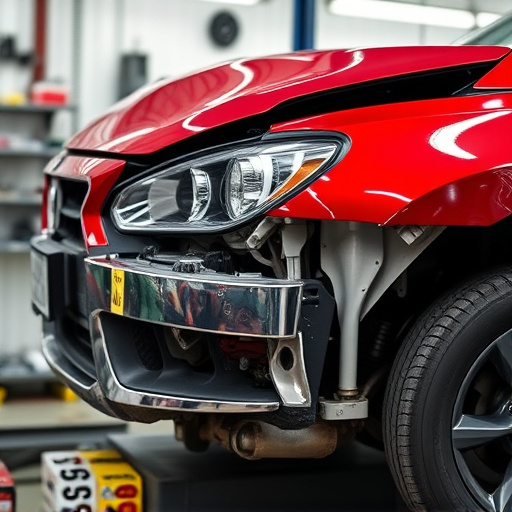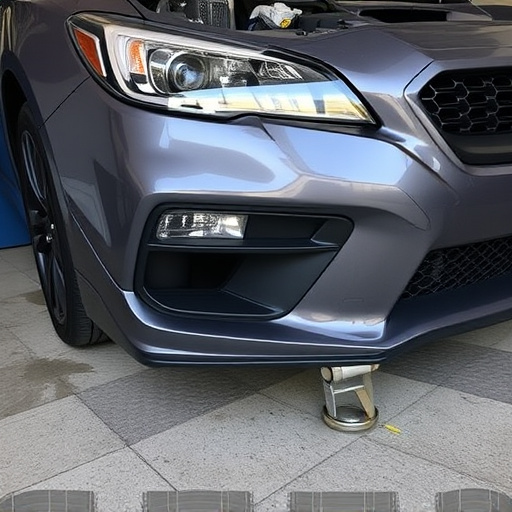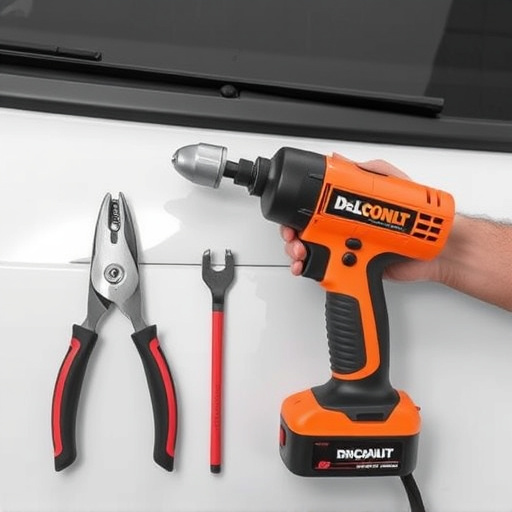Mercedes sequential turn signal repair demands specialized knowledge and precision. It involves resetting the ECU to synchronize with updated hardware, ensuring optimal vehicle performance. Thorough testing post-repair is crucial, verifying signal functionality, brightness, patterns, and synchronization. Regular auto maintenance extends component lifespan, enhancing safety and peace of mind for drivers, akin to auto body shops restoring vehicles' structural integrity.
After repairing or replacing a Mercedes’ sequential turn signal module, resetting the vehicle’s Electronic Control Unit (ECU) is crucial for optimal performance. This process ensures the ECU recognizes the new component and calibrates the turn signals accurately. The article delves into understanding the intricacies of Mercedes sequential turn signal repairs and outlines the precise steps to reset the ECU post-repair, including essential testing considerations.
- Understanding Mercedes Sequential Turn Signal Repair
- The Process of Reseting the ECU After Repair
- Post-Repair Testing and Considerations
Understanding Mercedes Sequential Turn Signal Repair

When it comes to Mercedes sequential turn signal repair, understanding the intricate system is key. Unlike traditional turn signals, these advanced systems are designed to sequence through a series of flash patterns, enhancing visibility and safety on the road. This unique feature is achieved through a specialized module within the vehicle’s Electronic Control Unit (ECU).
The process involves meticulous auto body repair and restoration techniques to ensure proper alignment and functionality. After replacing or repairing the Mercedes turn signal module, resetting the ECU is crucial. This step ensures that the ECU recognizes the new or repaired component, allowing for accurate signaling and maintaining the vehicle’s overall performance, just like a well-restored auto glass repair that enhances the car’s aesthetics without compromising structural integrity.
The Process of Reseting the ECU After Repair

After successfully repairing or replacing a Mercedes sequential turn signal module, resetting the ECU (Engine Control Unit) is a crucial step in ensuring optimal vehicle performance and functionality. This process involves synchronizing the ECU with the updated hardware, effectively ‘re-teaching’ it about the modified system. It’s akin to updating a computer’s software after an upgrade—you need to ensure everything runs smoothly post-change.
To reset the ECU, you’ll typically need to connect a specialized diagnostic tool to your Mercedes’ OBD-II port. This tool will communicate with the ECU, initiate the reset procedure, and verify that all systems are functioning correctly. Proper auto maintenance and detailing can further enhance the overall health and longevity of your vehicle’s electronic components, including the ECU, after such repairs. Remember, a meticulous approach to both auto repair and auto detailing is key in ensuring your Mercedes’ turn signals operate seamlessly and reliably.
Post-Repair Testing and Considerations

After successfully repairing or replacing the Mercedes sequential turn signal module, thorough post-repair testing is crucial. This involves verifying the proper functioning of all turn signals—including their brightness, flash patterns, and synchronization—to ensure they meet original equipment standards. It’s not just about checking if the lights work; it’s about confirming that they operate seamlessly with the vehicle’s electrical system, enhancing safety on the road.
Considerations extend beyond basic functionality. Scrutinize connections at the ECU (Engine Control Unit) to prevent any loose or corroded wires that could disrupt the system. Additionally, consult your auto repair shop’s diagnostics tools to ensure no error codes remain stored in the ECU from the initial failure. This meticulous approach ensures a seamless transition back onto the road for Mercedes owners, eliminating potential hazards and peace of mind for drivers who rely on their vehicle’s turn signals during everyday driving conditions and emergency situations alike, just like how an auto body shop would meticulously fix a dented fender or a damaged bumper to restore a vehicle’s aesthetic appeal.
After successfully repairing a Mercedes sequential turn signal module, resetting the Electronic Control Unit (ECU) is a crucial step in ensuring optimal vehicle performance. This process involves re-calibrating the ECU to recognize and execute the new turn signal functionality accurately. By following the outlined steps in this article, including understanding the repair process and conducting thorough post-repair testing, you can effectively reset the ECU, addressing any potential issues associated with Mercedes sequential turn signal repair.













